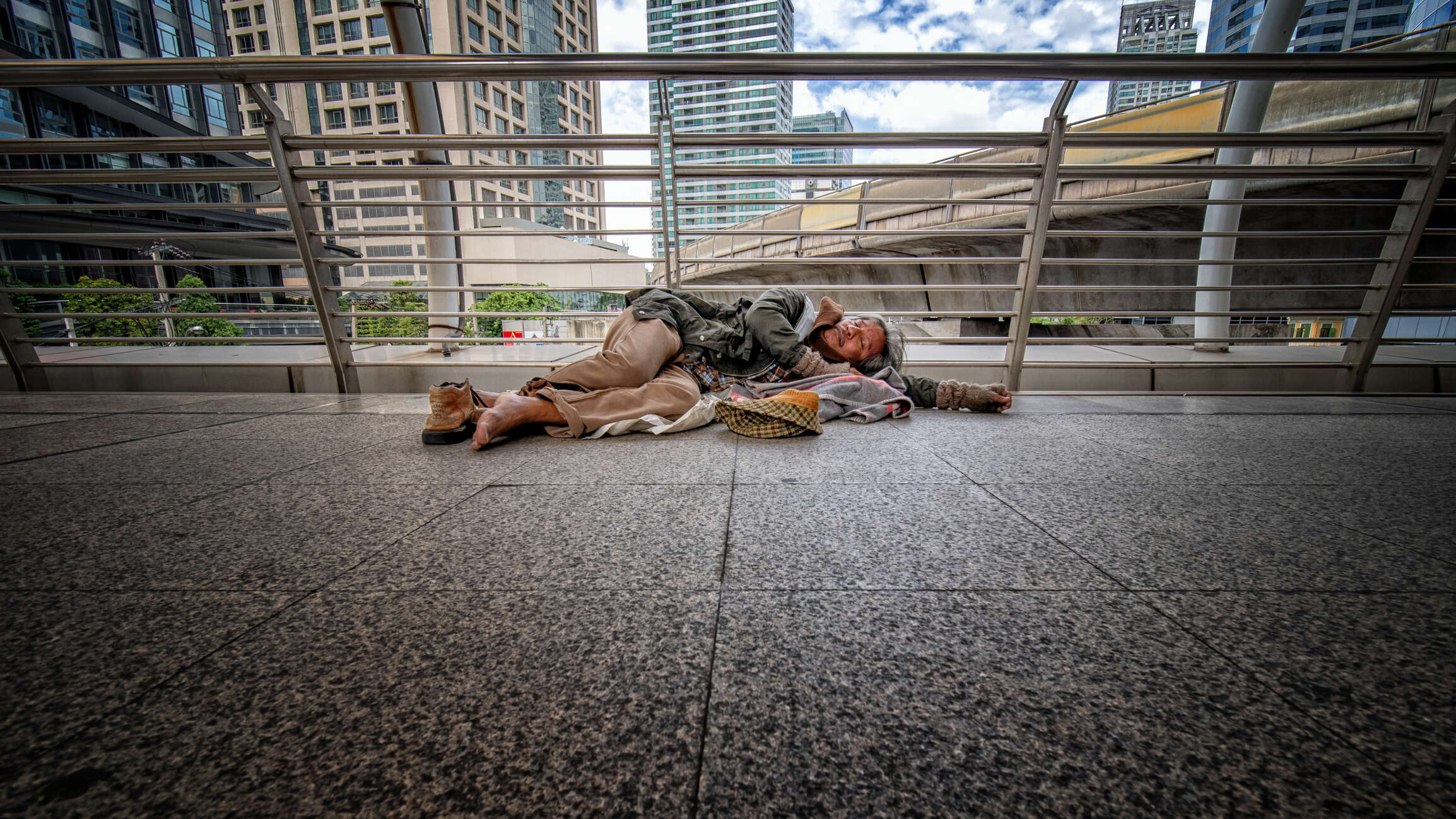
The number of rough sleepers in Greater London decreased last year, in large part due to the government’s Everyone In initiative, which provided funding to local authorities to house people in hotels and other accommodation during the Covid-19 pandemic.
However, there has been an increase in the number of rough sleepers in the capital seen repeatedly by outreach workers throughout the year, suggesting longer and more frequent periods of living on the streets.

Experts and advocates say the government needs to invest to turn the Everyone In initiative into a long-term, sustainable policy programme, and do more to tackle the underlying causes of homelessness.
How many rough sleepers are there in London?
New data from the Combined Homelessness and Information Network (Chain), managed by homelessness charity St Mungo’s, found that in the period from April 2021 to March 2022 there were 8,329 homeless people sleeping without adequate shelter in Greater London, a decrease of 24% compared with last year.
The largest decrease was in “new rough sleepers”, whose numbers fell by a third (32.4%) compared with 2020/21. Meanwhile, “stock” rough sleepers – the category Chain uses to define people recorded for the second year in a row – fell by 4% compared with last year, and “returners” (those who were recorded as rough sleeping after a year or more gap) fell by 11.5%. This is primarily due to the impact of Everyone In.
Just prior to the pandemic, the number of people rough sleeping each month was already extremely high, and the beginning of the first lockdown saw the numbers peak, leading to the high annual figures seen in 2019/20 and 2020/21.
The numbers decreased steadily in the 12 months through to March 2021 due to the Everyone In funding, but in the past year have begun to increase again somewhat after the lifting of the 2021 lockdown.
The total number of rough sleepers seen in the past year was 6% below the numbers seen pre-pandemic in the year 2018/19, with new rough sleepers 8% below.
[Read more: Eviction court claims by private landlords now higher than before the pandemic]
But this reduction in numbers exposes a different trend: that the people rough sleeping in London in the past year are doing so more frequently. While overall the number of rough sleepers fell, the number of people recorded as rough sleeping more than six times throughout the year actually increased.
It’s important to note that someone recorded six times will most likely have been rough sleeping far more than that: two-thirds of new rough sleepers said they had already been rough sleeping for at least a week when they were first spoken to by an outreach worker.
Among “stock” rough sleepers, around 30% were seen more than six times throughout the year before the pandemic, and this fell to 26% in the year 2020/21. In the past year, 35% of “stock” rough sleepers were seen more than six times, and 17% were recorded more than ten times.
The proportion of “returner” rough sleepers seen more than ten times rose similarly – from 3.9% in 2020/21 to 6% in the past year.
[Read more: Redefining London’s social spaces]
The past year also saw a rebound in the proportions of rough sleepers who have specific support needs. Half were recorded as having mental health support needs, while 34% needed drug support and 31% needed alcohol support.
More than a third (35%) of rough sleepers needed support for more than one of these needs.
However, advocate groups warn that, while the Everyone In initiative did have a strong impact, nothing has been done to sustain that impact or address the underlying factors, meaning that next year's data is likely to see the levels of homelessness bounce back or even exceed pre-pandemic levels.
“With the economy worsening since the end of March and the end of the Protect and Vaccinate funding [to increase vaccination among people sleeping rough and provide emergency accommodation], along with the end of the Everyone In initiative, we are interested to see the next set of data released,” says St Mungo’s interim chief executive Rebecca Sycamore.
“The cost-of-living crisis is escalating and there is a risk that all the good work done during the last year will be wiped out as the threat of homelessness becomes an increasing reality for more and more people.”
[Read more: For more equitable parks, design them to be inclusive of homelessness]






